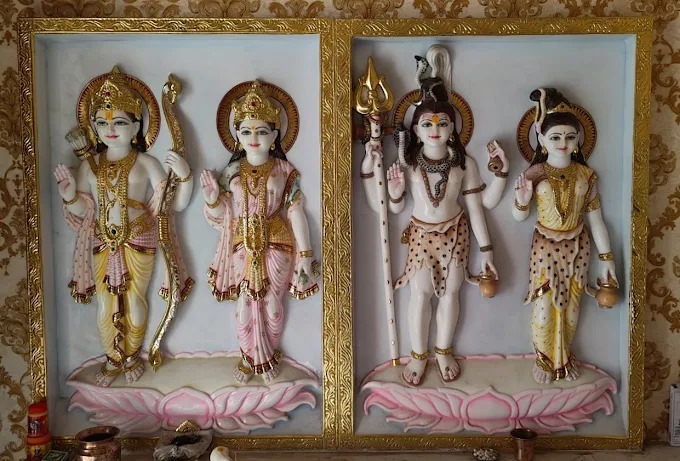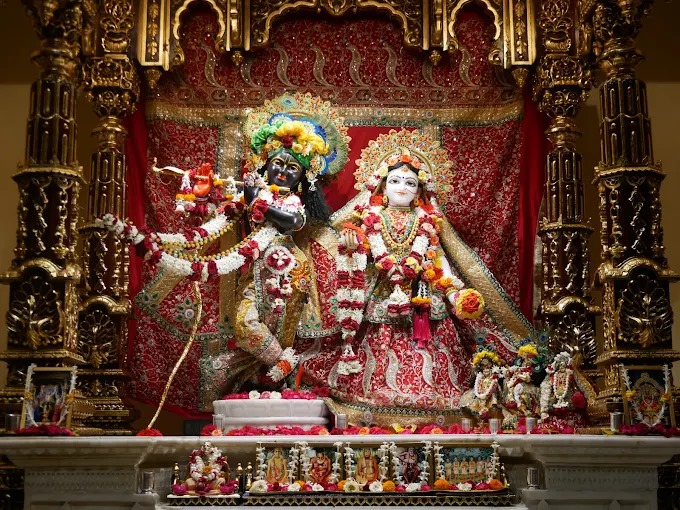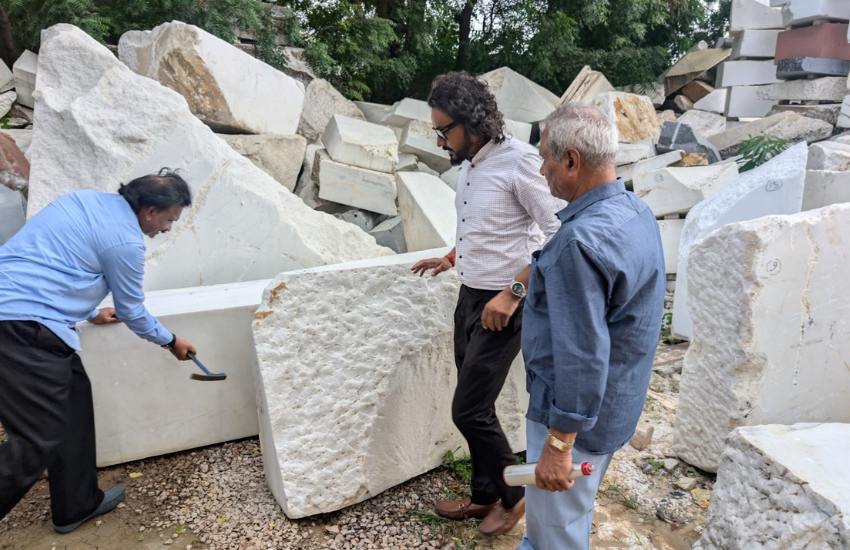Indian marble handicrafts have long been recognized for their timeless beauty, intricate detailing, and cultural significance. Even though modern art has found its place in the market, it has never been able to replace the charm of traditional handicrafts.
What makes Indian, especially Rajasthan marble handicraft, truly special is not just the beauty but a strong reflection of generations of skill, dedication, and tradition within every design.
In this blog, we will talk about why the demand for Indian marble handicrafts is growing around the world, how these handmade pieces are created, and how buyers can identify authentic marble art.
How are Marble Handicrafts Made?
Marble handicraft is an art tradition that has been running for ages, especially in culturally rich states like Rajasthan. It is a process that demands expertise, patience, and precision.
The process of crafting a marble handicraft starts with selecting the right block of marble. Every piece of marble has its own character, so understanding its texture and tone is important before shaping it.
Once the block is chosen, it is roughly cut into the desired size using hand tools or machines. The next stage is chiseling. With each strike of the chisel and hammer, the form slowly starts taking shape. This step can take days, depending on how detailed the design is.
After the basic shape is ready, the surface is refined with smaller chisels, rasps, and sandpapers. Carving fine details, especially the folds of fabric, facial expressions, or patterns in handmade god statues, is the most delicate part.
After that, artisans use sandpaper and natural powders to achieve that soft, smooth glow marble is known for. In some cases, wax or special polishing materials are used for extra shine. For many designs, painting is the final step to highlight expressions, ornaments, and textures. It gives depth and grace to the sculpture while preserving its natural charm.
Why are Marble Handicrafts Considered Valuable?
Marble handicrafts are considered valuable due to their timeless beauty, intricate detailing, and the immense skill required to craft them. The process of transforming the raw stone into a finished masterpiece takes time, experience, and precision, often involving endless efforts in carving, polishing, and painting.
The value of hand-made marble crafts lies in both the quality of the marble and in the craftsmanship behind them. Skilled artisans spend years mastering the techniques of carving delicate patterns, facial expressions, and fine textures. Unlike mass-produced materials, marble handicrafts carry the warmth of human touch, which gives them artistic and emotional worth.

Marble is also known for its lasting strength. It can resist wear and retain its shine for generations, making it a symbol of endurance and purity. This is why many ancient temples, monuments, and sculptures made of marble still stand gracefully today.
In addition to craftsmanship and durability, marble handicrafts hold cultural and spiritual significance. They often represent traditions, beliefs, and regional artistry passed down through generations.
What is Driving the Demand for Marble Handicrafts?
The growing demand for marble handicrafts comes from a renewed appreciation for traditional craftsmanship and authentic art. In a time when most things are machine-made, people are turning back to handmade creations that carry the mark of human skill and emotion. Marble handicrafts, especially handcrafted marble murtis, are being exported to Western countries.
Many buyers today are drawn to the purity and elegance of marble. Its natural shine, smooth texture, and ability to retain fine details make it ideal for sculptures and decorative pieces. The rise in demand is also linked to the growing interest in cultural and spiritual art. Handcrafted marble moortis of deities like Lord Krishna, Ganesha, and Radha-Krishna are in high demand these days, not only for temples but also for homes, offices, and spiritual spaces as symbols of peace and prosperity.
What Modern Trends are Influencing Marble Handicraft Demand?
The art of marble handicraft has stood strong for generations, but in recent years, its demand has grown even more. Today, handcrafted marble murtis and marble decor pieces are finding a place in traditional homes and in modern interiors, offices, and international art collections.
1. Blend of Tradition with Modern Design
The strongest trend driving marble handicraft demand in the global market is the fusion of traditional carving with modern aesthetics. Artisans are now experimenting with cleaner lines, minimalist patterns, and subtle finishes without losing the essence of classical Indian design.
Handcrafted marble moortis of deities like Ganesha, ISKCON-style Radha Krishna Statue, and Lakshmi are being sculpted in styles that complement both traditional and contemporary interiors.
2. Rise of Spiritual and Wellness Spaces
The growing interest in meditation, yoga, and mindfulness has created a strong market for handcrafted marble spiritual decor. People are designing home temples and personal prayer corners where marble idols are used as symbols of purity and peace.
The calm energy of marble and its connection with devotion make it a preferred choice for such spaces. Even in wellness centers and resorts, marble statues are being used to create a serene atmosphere.
3. Growth of Online Platforms and Global Reach
Digital platforms have opened new opportunities for artisans. Earlier, marble craftsmen were limited to local buyers, but now their work reaches global audiences through online marketplaces and exhibitions.
Customers from different countries are showing interest in handcrafted marble murtis and decor items, drawn to their cultural significance and beauty.
4. Customized and Personalized Art
Modern customers prefer something that feels personal and unique. This has led to a rise in demand for customized marble handicrafts. At Pandey Moorti Bhandar, we often receive requests for personalized marble murtis, engraved nameplates, or marble décor pieces with unique designs. Handcrafted marble idols are sometimes made according to the client’s choice of posture, expression, or size.
5. Influence of Interior Design Trends
Interior designers are playing a major role in promoting marble handicrafts. Marble sculptures, vases, tabletops, and wall panels are being used in luxury homes, hotels, and offices as statement pieces.
The natural veins, shine, and texture of marble bring elegance to modern interiors. The mix of warm lighting with polished marble enhances its visual charm and gives any space a touch of sophistication.
How Do Buyers Identify Authentic Marble Handicrafts?
Identifying authentic marble handicrafts requires a careful eye and a little knowledge of the craft. Genuine marble crafts made by hand have qualities that set them apart from imitations made with plaster or synthetic materials. Based on years of working with marble, here are some clear points that help buyers recognize authentic work:

- Natural Veins and Texture: Real marble has fine, natural veins that flow irregularly through the surface. No two pieces will have the same pattern. Fake or composite materials often show repetitive or printed textures.
- Cool Touch and Weight: Marble always feels cool to the touch and heavier than its size suggests. Artificial materials are usually lighter and warm quickly when held.
- Sound Test: Tapping lightly on a marble surface produces a clear, ringing sound, while fake materials give a dull tone. Skilled artisans often use this simple method during carving.
- Detailing and Finish: Authentic handcrafted marble moortis show fine carving, smooth edges, and balanced proportions. Machine-made replicas usually lack the depth and expression seen in handmade pieces.
- Color and Polish: Natural marble has a soft shine even without heavy polish. Overly glossy surfaces often indicate a synthetic coating or a chemical finish.
Conclusion
The demand for marble handicrafts reflects a growing appreciation for tradition, craftsmanship, and cultural heritage. Handcrafted marble moortis and decorative pieces offer timeless beauty, intricate detailing, and durability, making them sought after in homes, temples, offices, and international markets.
If you are looking for authentic and high-quality marble art, Pandey Moorti Bhandar offers carefully handcrafted marble murtis and décor that combine traditional skill with modern aesthetics. Each creation carries purity, artistry, and devotion, offering more than a decorative piece.
FAQs
Why are Marble Handicrafts So Popular?
Marble handicrafts are popular for their timeless beauty, intricate detailing, and cultural significance. Their durability, elegance, and the skilled craftsmanship behind each piece make them cherished both for décor and spiritual purposes.
Where are the Best Marble Handicrafts Made?
The finest marble handicrafts are made in Rajasthan, India, especially in cities like Jaipur, Makrana, and Udaipur. These regions have skilled artisans and high-quality marble, producing authentic, detailed, and long-lasting pieces.
Can Marble Handicrafts be Used in Modern Décor?
Yes, marble handicrafts, including handcrafted murtis, complement modern interiors beautifully. Minimalist designs, clean finishes, and small decorative sculptures can add elegance, sophistication, and a touch of heritage to contemporary spaces.
Are Marble Handicrafts Expensive?
Marble handicrafts can be costly due to the quality of marble and the labor-intensive craftsmanship involved. The value reflects their durability, fine detailing, cultural significance, and the time invested in handcrafting each piece.
Can Marble Handicrafts be Gifted?
Yes, marble handicrafts, such as handcrafted Hindu God Moortis and decorative items, make meaningful gifts. They carry tradition, artistry, and cultural value, making them perfect for weddings, housewarmings, and special occasions.

